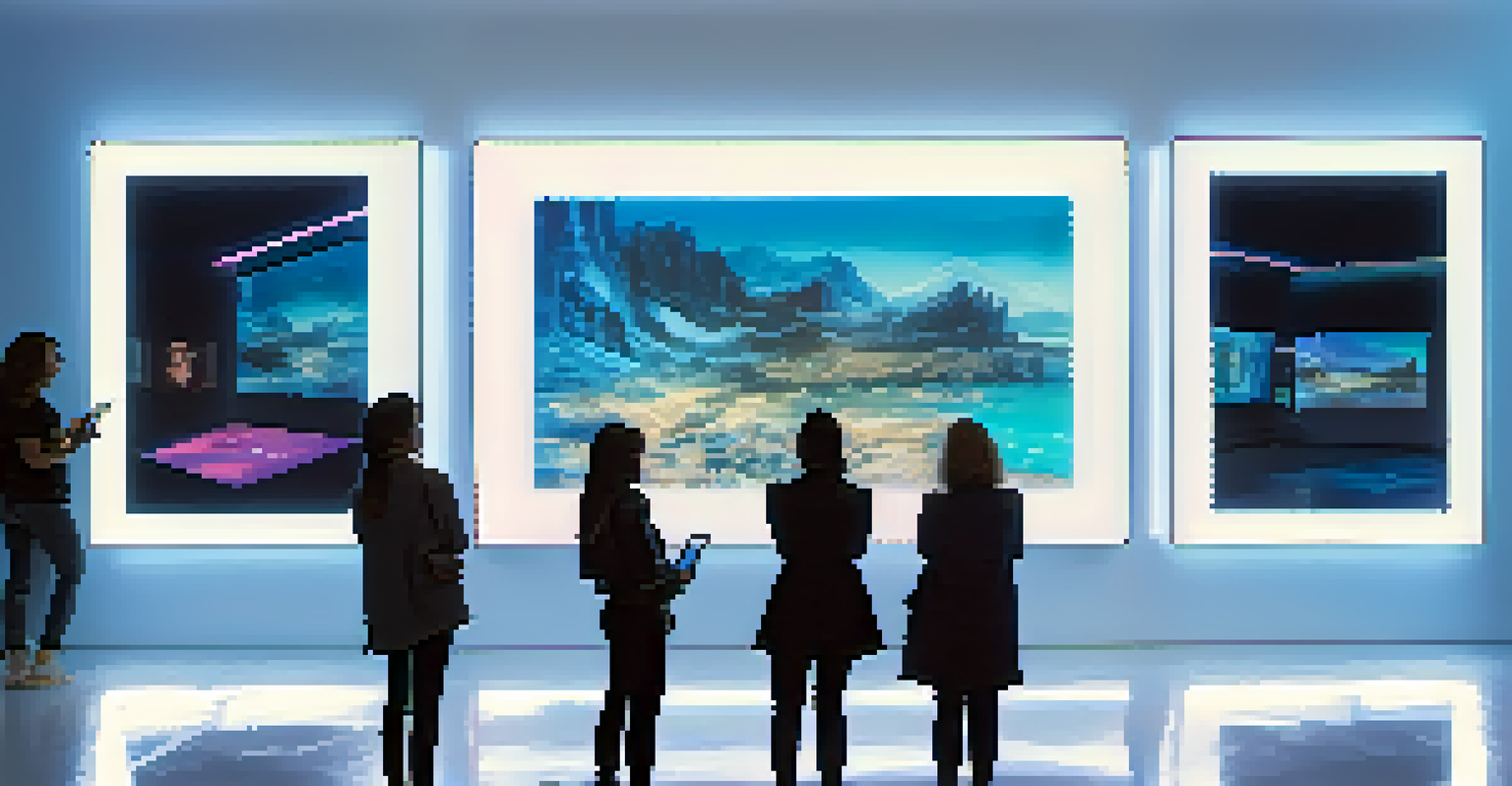The Intersection of Blockchain Technology and Art Provenance

Understanding Art Provenance and Its Importance
Art provenance refers to the history of ownership of a piece of art. It provides crucial information about where the artwork has been, who has owned it, and how it has changed hands over time. This information is vital for collectors and investors as it significantly impacts the artwork's authenticity and value.
Art is not freedom from discipline, but disciplined freedom.
When you buy a piece of art, you want to ensure that it's genuine and not a forgery. Provenance acts as a narrative that tells the story of the artwork, adding layers of meaning and worth. Without proper provenance, the value of an artwork can plummet, making it essential for artists, galleries, and collectors to keep detailed records.
In the traditional art market, verifying provenance can be a tedious process that relies on paper trails and expert opinions. However, these methods can be flawed, leading to disputes and uncertainty. This is where blockchain technology steps in, promising to revolutionize how provenance is recorded and validated.
How Blockchain Works: A Simple Breakdown
Blockchain is essentially a digital ledger where transactions are recorded in a secure and transparent manner. Each transaction, or block, is linked to the previous one, creating an unchangeable chain of information. This decentralized approach ensures that no single entity controls the data, making it more reliable and trustworthy.

Think of blockchain like a public library; anyone can access the information, but no one can alter the books once they're cataloged. This transparency is crucial for art provenance, as it allows buyers and sellers to verify the origin and ownership history of a piece without relying on potentially biased sources.
Art Provenance Ensures Authenticity
The history of ownership, or provenance, is crucial for verifying the authenticity and value of artwork.
Moreover, because every transaction is timestamped and encrypted, the risk of forgery or fraud is significantly reduced. With blockchain, an artwork's journey from artist to collector can be traced with confidence, which is a game changer for the art world.
The Benefits of Blockchain for Artists and Collectors
For artists, blockchain technology offers a new way to secure and showcase their work, ensuring they receive proper credit and compensation. By minting their artworks as non-fungible tokens (NFTs), they can create a digital certificate of authenticity that is verifiable on the blockchain. This means that even if their artwork changes hands, the artist's original rights are preserved.
Technology is best when it brings people together.
Collectors also stand to gain from this technology. With blockchain, they can confidently purchase art knowing its provenance is securely recorded. This not only protects their investment but also enhances the piece's resale value, as future buyers can easily verify the artwork's history.
Additionally, blockchain can streamline the buying and selling process. By eliminating the need for intermediaries, such as galleries or auction houses, artists can connect directly with collectors, fostering a more transparent and equitable art market.
Real-World Examples of Blockchain in Art Provenance
A growing number of platforms are now utilizing blockchain to verify art provenance. One notable example is Verisart, which enables artists to certify their work on the blockchain, creating a permanent record that can be accessed by anyone. This platform has gained traction among artists and collectors alike, demonstrating the practicality of blockchain in the art world.
Another impressive case is the collaboration between the auction house Christie's and the blockchain company Mattereum. This partnership aims to bring physical artworks onto the blockchain, allowing buyers to own both the digital and physical aspects of an artwork. Such innovations highlight the potential for blockchain to redefine how art is bought and sold.
Blockchain Enhances Art Transactions
Blockchain technology provides a secure, transparent way to record art provenance, reducing the risk of forgery.
These examples illustrate that the intersection of blockchain technology and art provenance is not just theoretical; it's happening in real-time. As more artists and collectors embrace this technology, we can expect to see significant changes in how art is valued and traded.
Challenges and Limitations of Blockchain Technology
Despite its many advantages, blockchain technology is not without challenges. One of the primary concerns is the environmental impact associated with blockchain transactions, particularly those using proof-of-work systems. These systems require substantial computational power, leading to increased energy consumption, which has raised sustainability concerns in the art community.
Moreover, the technology is still relatively new, and many artists and collectors may not fully understand how to leverage it for provenance. This knowledge gap can create barriers to adoption, limiting the technology's potential impact in the art world. Education and outreach will be essential to bridge this divide.
Finally, while blockchain can enhance transparency, it is not a panacea for all issues related to art provenance. Questions about ownership rights, copyright, and the legality of digital art still need to be addressed. As the technology evolves, ongoing discussions will be necessary to ensure that it complements existing legal frameworks.
The Future of Art Provenance in a Blockchain-Driven World
Looking ahead, the integration of blockchain technology in art provenance holds immense potential to reshape the industry. As more platforms spring up to support artists and collectors, we can expect a more transparent and accessible art market. This shift could democratize access to art, allowing a broader audience to engage with and invest in artworks.
Furthermore, the rise of NFTs has already started to change how we perceive ownership and value in art. By creating unique digital representations of artworks, collectors can own a piece of the digital realm, which could influence how traditional art is bought and sold in the future. The lines between digital and physical art will likely continue to blur.
Future of Art is Blockchain-Driven
The integration of blockchain in art provenance is set to democratize the market, making art more accessible and trustworthy.
Ultimately, the future of art provenance will hinge on collaboration among artists, collectors, and technologists. By embracing blockchain, the art world can foster a more secure, equitable, and innovative landscape where creativity can thrive without the burden of doubt or deception.
Conclusion: Embracing Change in the Art World
As we navigate the intersection of blockchain technology and art provenance, it's clear that change is on the horizon. While challenges exist, the potential benefits far outweigh the drawbacks. By adopting blockchain, the art community can enhance trust, transparency, and security, creating a more vibrant marketplace for everyone involved.
Just as the invention of the camera transformed the art world in the 19th century, blockchain is poised to create a new paradigm for how art is valued and authenticated. Artists and collectors who embrace these advancements will likely find themselves at the forefront of this exciting evolution.

In conclusion, the fusion of technology and creativity is not just a trend; it's a necessity. By harnessing the power of blockchain, we can pave the way for a future where art is celebrated not only for its beauty but also for its authenticity and integrity.